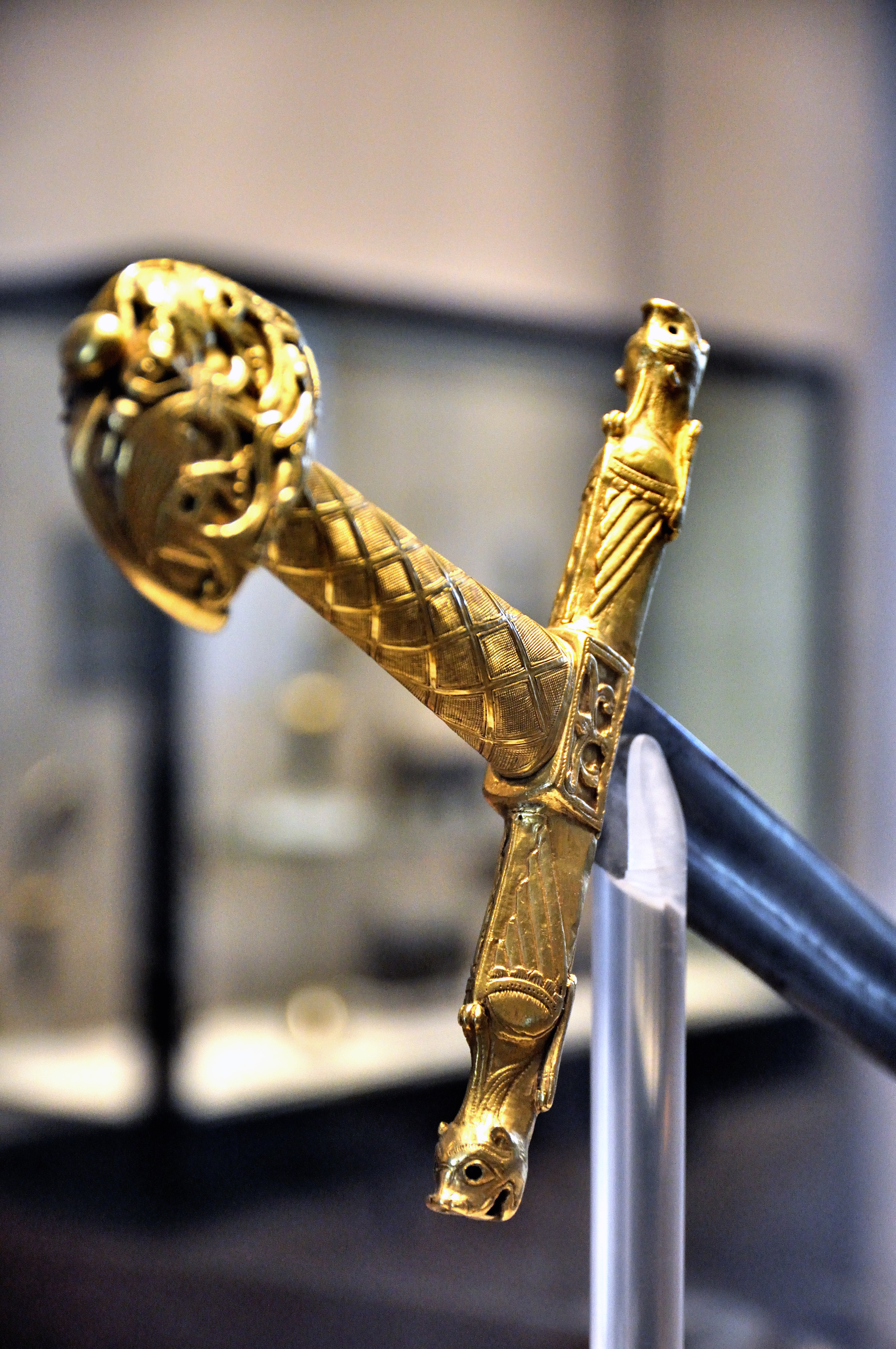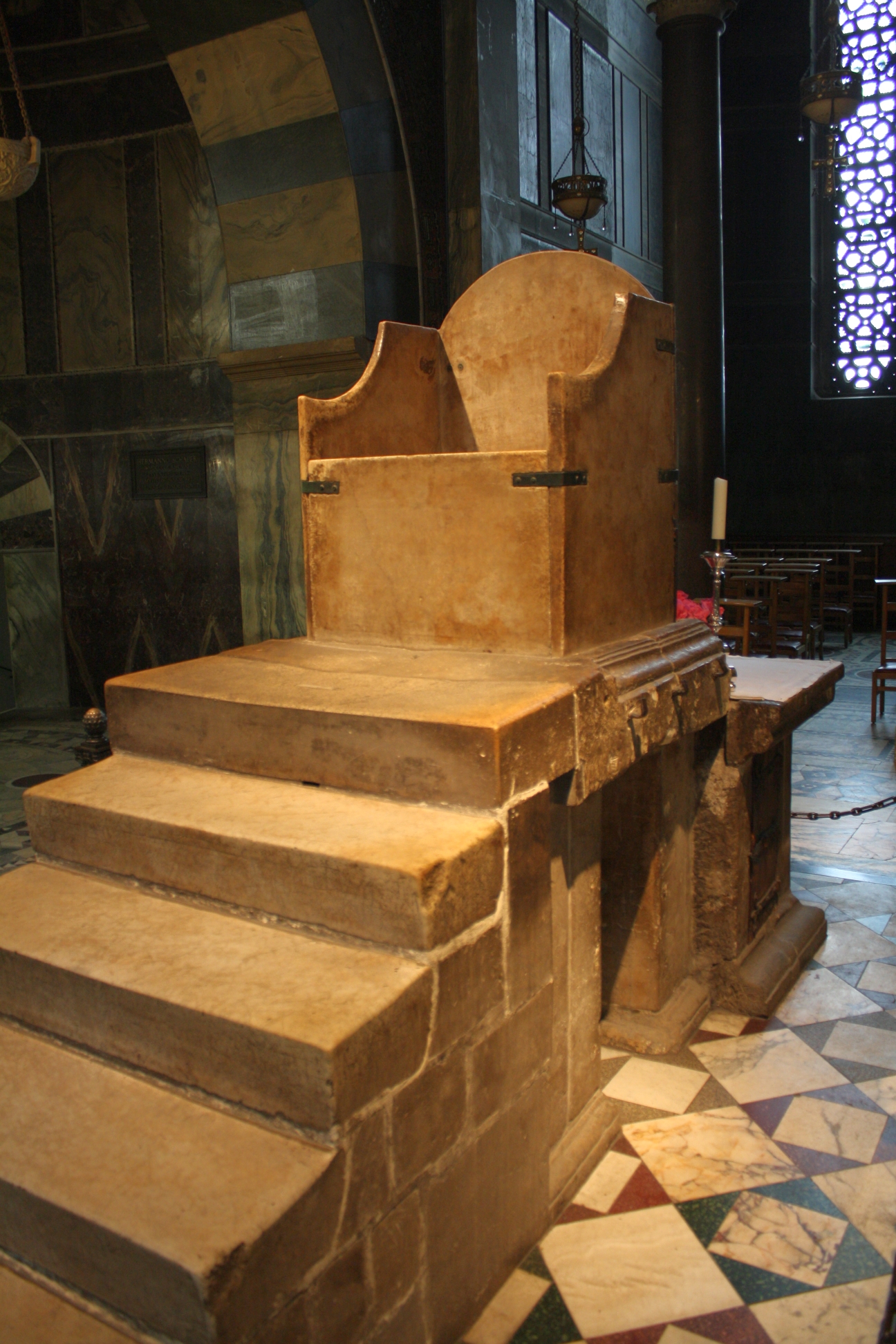 Charlemagne—or Charles the Great—is one of the most important figures in European history. He was king of the Franks, a people living in what is known as France today. He was born in 742 AD, the son of the Frankish king Pepin the Short. He inherited the crown together with his brother Carloman in 768, but when Carloman passed away in 771, Charles became the sole ruler. His successes in defeating the Lombards and Saxons made the Pope declare Charles the first champion of the Catholic Church in 774. The next 20 years were full of warfare against Saxons, Lombard insurgents and the Moors of Spain. In the latter conflict, there was a Frankish campaign against the Moors in 778, where the legendary battle in the Pass of Roncevalles took place. In this battle, Charles' paladin Roland fell, breaking his sword "Durandal" and entered legend in the "Song of Roland". After the fall of the Roman Empire, he was the first to reunite Western Europe. He ruled a vast kingdom that encompassed what is now France, Germany, Italy, Austria, and the Low Countries, consolidating Christianity through his vast empire through forced conversions. His military ‘accomplishments’ frequently involved extreme brutality, such as the beheading of more than 2,500 Frankish and Saxon village chiefs.
Charlemagne—or Charles the Great—is one of the most important figures in European history. He was king of the Franks, a people living in what is known as France today. He was born in 742 AD, the son of the Frankish king Pepin the Short. He inherited the crown together with his brother Carloman in 768, but when Carloman passed away in 771, Charles became the sole ruler. His successes in defeating the Lombards and Saxons made the Pope declare Charles the first champion of the Catholic Church in 774. The next 20 years were full of warfare against Saxons, Lombard insurgents and the Moors of Spain. In the latter conflict, there was a Frankish campaign against the Moors in 778, where the legendary battle in the Pass of Roncevalles took place. In this battle, Charles' paladin Roland fell, breaking his sword "Durandal" and entered legend in the "Song of Roland". After the fall of the Roman Empire, he was the first to reunite Western Europe. He ruled a vast kingdom that encompassed what is now France, Germany, Italy, Austria, and the Low Countries, consolidating Christianity through his vast empire through forced conversions. His military ‘accomplishments’ frequently involved extreme brutality, such as the beheading of more than 2,500 Frankish and Saxon village chiefs. Many things about Charlemagne's reign as King and as Emperor are memorable; among them is the legend of his sword - Joyeuse or "Joyful. Legend states that the sword of Joyeuse, meaning “joyful” in French, was forged by the famous blacksmith Galas, and took three years to complete. The sword was described as having magical powers associated with it. It was said to have been so bright that it could outshine the sun and blind its wielder's enemies in battle, and any person who wielded the legendary sword could not be poisoned. The Emperor Charlemagne, coming back from Spain was said to have set up camp in the region and acquired the sword.
Many things about Charlemagne's reign as King and as Emperor are memorable; among them is the legend of his sword - Joyeuse or "Joyful. Legend states that the sword of Joyeuse, meaning “joyful” in French, was forged by the famous blacksmith Galas, and took three years to complete. The sword was described as having magical powers associated with it. It was said to have been so bright that it could outshine the sun and blind its wielder's enemies in battle, and any person who wielded the legendary sword could not be poisoned. The Emperor Charlemagne, coming back from Spain was said to have set up camp in the region and acquired the sword.Beginning in the 13th Century, the ancient blade featured prominently in coronation rites of France’s rulers — a tradition that continued right up to the 1825 crowning of Charles X. There’s even a town in the south of the country named for the weapon. Over the years, Joyeuse underwent a series of restorations and upgrades. According to the Louvre, the pommel, cross guard and grip were all completely replaced between the 10th and 13th centuries. The steel itself was refurbished in the 19th Century, although portions of the original 3.6-pound, three-foot sword reportedly date back to the Early Medieval period.
There are other amazing artifacts of Charlemagne - talisman with a parts of True Cross in it. The talisman had two large cabochon sapphires. One was oval and the other was square. They were set into a remnant of the wood from the Holy Cross (the Cross of Jesus) and a small piece of the Virgin's hair. This talisman was buried with him at Aix-la-Chapelle, in 814, and re-discovered when the tomb was opened by Otto III in 1000. The talisman was then preserved in the treasury of the Cathedral until it was given, by the canons, to Empress Josephine in 1804, to wear at her coronation.

Surprisingly, the real throne of Charlemagne looks quiet poor. Erected in the 790s, until 1531, it served as the coronation throne of the Kings of Germany, being used at a total of thirty-one coronations. The throne is very plain and simple and entirely free of elaboration. Six steps lead up to the seat, which is on a podium. The seat itself consists of four marble plates held together with bronze clamps. According to the modern theory, the marble and the steps were taken from the Church of the Holy Sepulchre in Jerusalem around 800.
In the same Aachen Cathedral lies his grave. It was exhumed few times and what's rather unusal his bones survived to our times. In 1000, Otto III, keen to present himself as the successor of the great man, had the burial vault opened. According to German chronicler and bishop Thietmar of Merseburg who was a contemporary of Otto’s, when the vault was opened they found Charlemagne’s uncorrupt body seated upon a marble throne wearing a crown with a scepter in his hand and the gospels open in his lap. Otto reportedly Helped himself to some of the relics and brought them to Rome. Frederick I Barbarossa was the next to disinter Charlemagne. In 1165, he had the remains exhumed and displayed as holy relics at the Aachen Court festival. In 1215, Frederick II had Charlemagne exhumed yet again. He commissioned local goldsmiths to make a rich gold casket to hold the bones. That’s the Karlsschrein originally in the placed in the center of the Palatine Chapel underneath a chandelier donated by Frederick Barbarossa in 1168. In 1349, some of his bones were removed to individual reliquaries by Holy Roman Emperor Charles IV. He had a gold reliquary made to contain a thigh bone, and the Bust of Charlemagne to contain the skullcap. Louis XI of France contributed to the trend in 1481 by commissioning the Arm Reliquary, a golden arm that contains the ulna and radius from Charlemagne’s right arm. It was scientists who took over from the emperors and kings. In 1861, Charlemagne’s remains were exhumed again so they could be studied. His skeleton was reconstructed and a very generous estimate (1.92 meters, or 6’4″) made of his height. In 1988, scientists exhumed his remains one more time, this time in secret. This study covered the bones in the reliquaries as well, a total of 94 bones and bone fragments, and they spent years meticulously examining and testing the collection. At 1.84 metres (six feet), he was unusually tall for his time. It's also estimated that his weight was at around 78 kilograms, giving him a slim body mass index of around 23. The average height for an adult male in the 9th century was 1.69 meters or 5’6″
 |
| Arm reliquary |
 |
| Photo of Charlemagne bones from 1988 exhumation |
 |
| Burial Shroud of Charlemagne. Made with murex snail dye, the famed purple favored by Roman emperors. |



0 comments:
Post a Comment